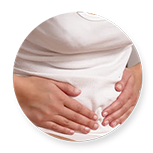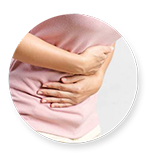Gallstone Surgery in Chennai at the right cost
Say Goodbye to Gallstone Discomfort
Trust Be Well Hospitals for Expert Care
- Cashless Procedure
- All Insurance Accepted

What Are Gallstones?
Gallstones are hardened deposits that form in the gallbladder, a small organ beneath the liver. They can vary in size and may cause blockages in the bile ducts, leading to pain and digestive issues. Prompt medical attention is essential to prevent complications.
Why Choose BE WELL?
- Expertise in Laparoscopic and Open Cholecystectomy
- Advanced Imaging and Diagnostic Facilities
- Patient-Centric Approach Ensuring Comfort and Safety
- Multiple Centers Across Tamil Nadu for Accessible Care
Symptoms of Gallstones

Back pain

Nausea and Vomiting

Pain in the central of abdomen

Fever

Pain in the right portion
of your abdomen

Back pain

Nausea and Vomiting

Pain in the central of abdomen

Fever

Pain in the right portion
of your abdomen

Back pain

Nausea and Vomiting

Pain in the central of abdomen
Surgical Treatment
The primary treatment for symptomatic gallstones is the surgical removal of the gallbladder, known as a cholecystectomy. At Be Well Hospitals, we offer:
Laparoscopic Cholecystectomy: A minimally invasive procedure involving small incisions, leading to reduced postoperative pain and quicker recovery. Most patients can resume normal activities within 1–2 weeks.
Open Cholecystectomy: A traditional surgery involving a larger incision, typically reserved for complicated cases. Recovery may take 4–6 weeks.
Frequently Asked Questions
Surgical removal of the gallbladder (cholecystectomy) is the most effective treatment for symptomatic gallstones.
While some small gallstones may not cause symptoms and can be managed with lifestyle changes, symptomatic gallstones often require surgical intervention.
Gallstones form when substances like cholesterol or bilirubin become concentrated in the bile and crystallize.
If left untreated, gallstones can lead to serious complications like gallbladder inflammation, bile duct infections, or pancreatitis.
Be Well Gallstones Treatment Process
Patient Evaluation
Each patient undergoes a comprehensive medical assessment, including physical examination, blood tests, and imaging studies (like ultrasound or CT scan) to confirm the presence and severity of gallstones.
Preoperative Preparation
Once diagnosed, patients receive preoperative instructions, which may include fasting and medication adjustments. Antibiotics may be administered to reduce infection risk.
Anaesthesia Administration
Cholecystectomy is typically performed under general anaesthesia, ensuring the patient is comfortable and pain-free during the procedure.
Surgical Intervention
Depending on the case, the surgeon performs either a laparoscopic or open cholecystectomy to remove the gallbladder and prevent further complications.
Postoperative Monitoring
After surgery, patients are monitored in the recovery area for vital signs and any immediate postoperative concerns. Pain management and antibiotics are provided as needed.
Post-Surgery Care and Follow-Up
Patients receive detailed postoperative care instructions, including dietary guidelines, activity restrictions, and wound care. Follow-up appointments are scheduled to monitor healing and address any concerns.
